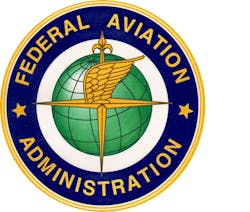The FAA and general aviation (GA) groups’ Fly Safe national safety campaign aims to educate the GA community on how to prevent Loss of Control (LOC) accidents this flying season. FAA Deputy Administrator Mike Whitaker officially kicked-off the #FlySafe campaign on Saturday, June 6, at the Aircraft Owners and Pilots Association’s (AOPA) Fly-In at the Frederick Municipal Airport, Frederick, MD.
What is Loss of Control (LOC)?
A Loss of Control (LOC) accident involves an unintended departure of an aircraft from controlled flight. LOC can happen because the aircraft enters a flight regime that is outside its normal flight envelope and may quickly develop into a stall or spin. It can introduce an element of surprise for the pilot. Contributing factors may include: poor judgment/aeronautical decision making, failure to recognize an aerodynamic stall or spin and execute corrective action, intentional regulatory non-compliance, low pilot time in aircraft make and model, lack of piloting ability, failure to maintain airspeed, failure to follow procedure, pilot inexperience and proficiency, or the use of over-the-counter drugs that impact pilot performance.
Did you know?
- Approximately 450 people are killed each year in GA accidents
- Loss of Control is the number one cause of these accidents?
- Loss of Control happens in all phases of flight. It can happen anywhere and at any time.
- There is one fatal accident involving LOC every four days.
Message from Mike Whitaker, FAA Deputy Administrator
The FAA and industry are working together to prevent Loss of Control (LOC) accidents and save lives. You can help make a difference by joining our Fly Safe campaign! Every month we’re going to provide pilots a LOC solution on faa.gov, developed by the team of experts on the GA Joint Steering Committee. They have studied the data and developed solutions – some of which are already reducing risk. We hope you will join us in this effort, and spread the word. Follow #FlySafe on Twitter, Facebook and Instagram. I know that working together as a community we can reduce LOC accidents.
Current topic: Transition Training
What is transition training?
Pilots benefit from transition training. Pilots need training when they transition from low-to-high and high-to-low performance aircraft.
Why is transition training important?
The National Transportation Safety Board’s (NTSB) accident data suggest that pilots with low time in type of aircraft are more likely to crash. Although some transition training such as high performance, high altitude, complex aircraft and tail wheel instruction and endorsement is required by regulation, training focused on unique types and variations of aircraft can also be essential.
Did you know?
Pilots trained in traditional aircraft are more than twice as likely to have an accident in Light Sport Aircraft (LSAs) than pilots who are first trained in LSAs. The first 50 hours a pilot flies in experimental/amateur built aircraft are the most hazardous. Transition training with an experienced and qualified instructor can make this period safer.
What does good transition training look like?
Transition training should:
- be conducted in accordance with a written training syllabus, which serves as a checklist for training;
- be based on a review of practical test standards, which list the flight proficiency standards for the certificate and/or rating the transitioning pilot holds;
- teach the pilot about what is different about an airplane and its installed equipment, such as avionics or controls;
- cover normal, abnormal, and emergency procedures;
- cover performance characteristics, including what to expect on takeoff, landing, cruise, descent, and glide;
- address limitations, such as weight and balance, speeds, and wind limits;
- be done with a current, qualified instructor who is fully knowledgeable about the airplane and equipment a pilot wants to train in; and
- be conducted in the environment that reflects where the pilot intends to fly.
Tips for pilots:
- Document personal performance.
- Avoid distractions.
- Seek refresher training within six months of original transition training. Follow with annual training. Refresh training when returning to flying after a period of inactivity.
- Join an aircraft type club.
- Join the WINGS proficiency program.
- Practice!
Learn more
Thinking about flying a new aircraft type? Watch a video featuring the FAA's Jim Viola who discusses the importance of finding a flight instructor familiar with your aircraft type to help with your transition training plan.
The WINGS Pilot Proficiency Program helps pilots build an educational curriculum suitable for their unique flight requirements. It is based on the premise that pilots who maintain currency and proficiency in the basics of flight will enjoy a safer and more stress-free flying experience.
Airplane Flying Handbook Chapters 11- 15 Transition Training
FAA transition training flyer.
Aircraft Owners and Pilots Association’s (AOPA) online course on transitioning to other airplanes.
The General Aviation Manufacturer’s Association (GAMA) transition training master syllabus.
FAA Safety Briefing, March/April 2014 issue.
The FAASafety.gov website has Notices, FAAST Blasts, online courses, webinars and more on key general aviation safety topics.
The FAA’s Additional Pilot Program Advisory Circular (AC 90-116) provides information and guidance on flight-testing experimental aircraft, allowing amateur-built aircraft owners to leverage experienced qualified pilots onboard while testing their aircraft.
The Fly Safe campaign partners are: Aircraft Owners and Pilots Association (AOPA), Aircraft Electronics Association (AEA), Experimental Aircraft Association (EAA), FAA FAASTeam, GA Joint Steering Committee, General Aviation Manufacturers Association (GAMA), National Agricultural Aviation Association (NAAA), National Air Transportation Association (NATA), National Association of State Aviation Officials (NASAO), National Association of Flight Instructors (NAFI), National Business Aircraft Association (NBAA), Soaring Society of America (SSA), Society of Aviation and Flight Educators (SAFE), University Aviation Association (UAA), U.S. Parachute Association (USPA).



